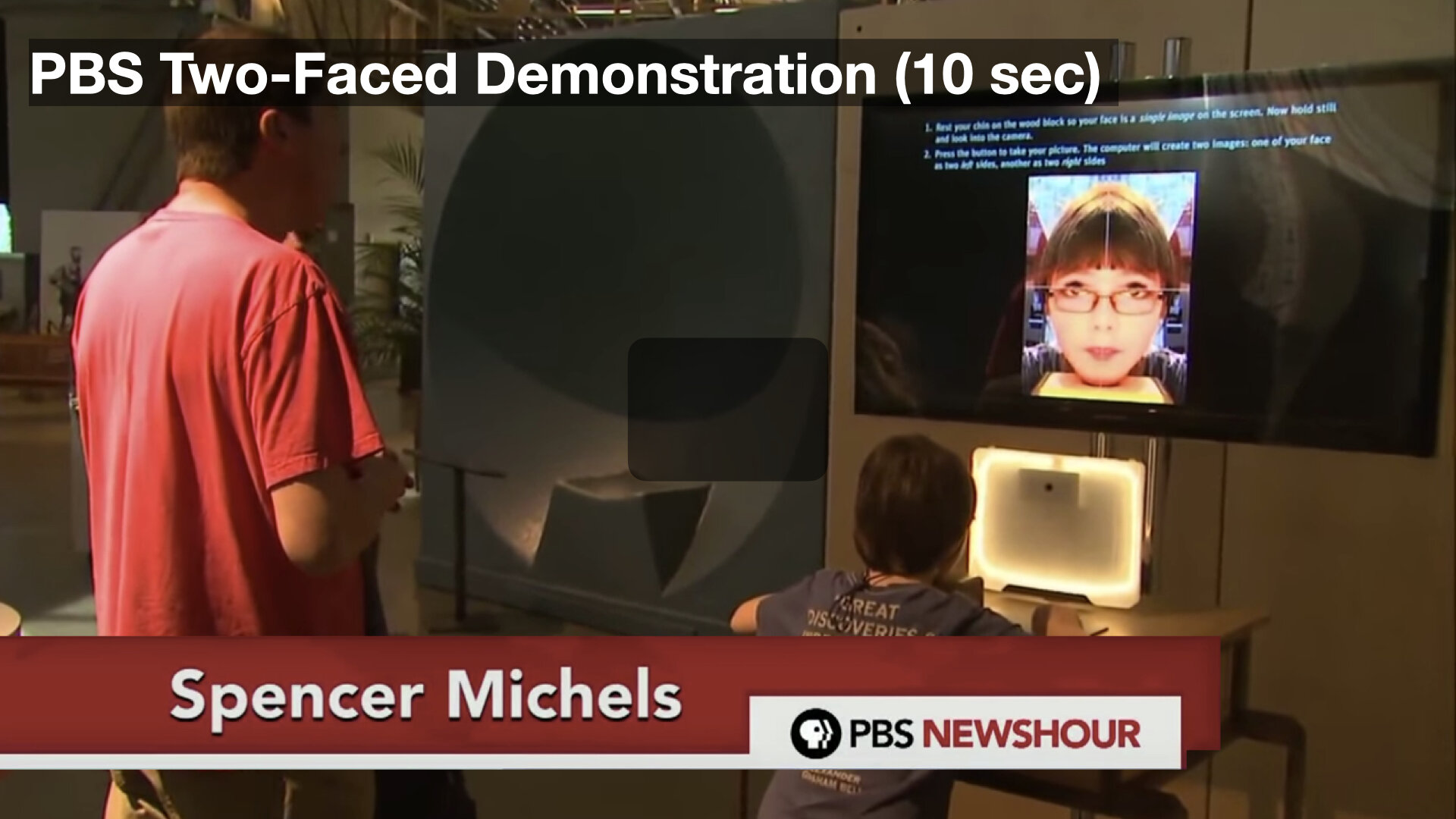TWO-FACED
Exploratorium, San Francisco
After a conversation with a neurobiologist friend, I became intrigued by research on facial asymmetry—the fact that our faces and expressions are not perfectly symmetrical. Interestingly, humans, monkeys, and dogs all tend to focus on the right side of human faces, which is typically more emotionally expressive ("left gaze bias"). This shared behavior may have evolved to help all three species quickly interpret emotional cues and determine "friend or foe."
In this exhibit, visitors see two versions of their face side by side: one is a mirrored version of just the right side, and the other is a mirrored version of just the left. Does a person’s choice of which side looks most like them match what a friend sees? Does one side appear happier than the other? Since we’re used to seeing our faces reversed in mirrors, our left-gaze bias might cause us to favor the opposite side compared to how others perceive us. This exhibit invites visitors to explore how self-perception and external perception differ, ultimately deepening empathy and understanding.

